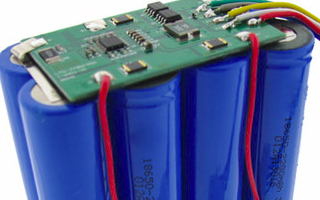In essence, the Lithium-ion battery is the battery that transfers ions from the negative side to the positively charged side, while also charging. The tiny red balls that are visible in the battery are lithium ions. They can move around to ensure that the system is running. In this article, we're going to gain a greater understanding of how the custom lithium-ion battery works.
The left side is an electropositive electrode, which is constructed from a material known as LiFePO4. The full form is lithium-iron-phosphate. In addition, the phosphate, as well as iron ions, form grids that hold the ions.

Image Source: Google
Charging the Battery
When charging, lithium ions are transported through the middle membrane to reach the electrode on the right. The membrane is constructed of one particular type of plastic, called a polymer. It has many tiny pores that make it much easier for ions to flow through. The negative side features a lattice of carbon atoms. They are capable of capturing and retention of ions, which try to travel to the other side.
The movement of the Ions
If you pay close attention, you will see that the lithium ions are on the positive side of the battery called an electrode. If you have a fully charged battery, the lithium ions are stored in the negative electrode carbon.

